Konstantinos Papadopoulos
Face-GCN: A Graph Convolutional Network for 3D Dynamic Face Identification/Recognition
Apr 20, 2021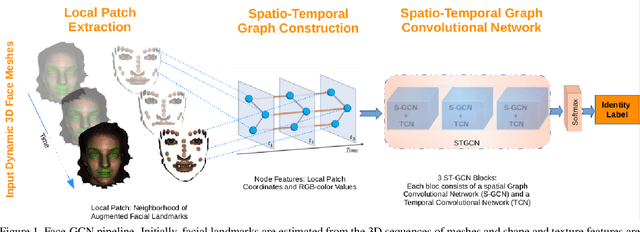
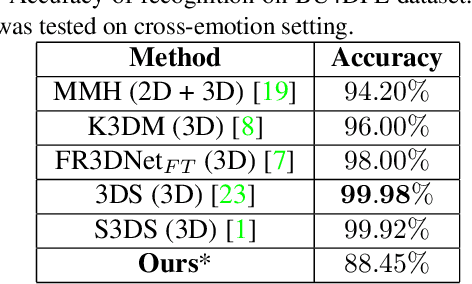
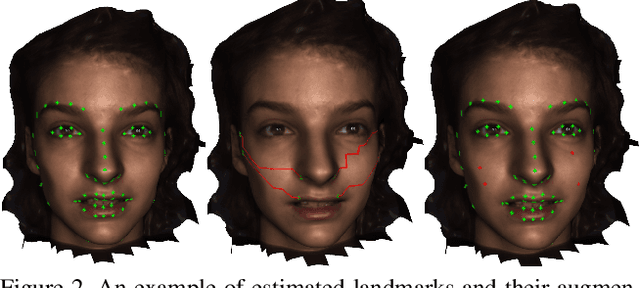
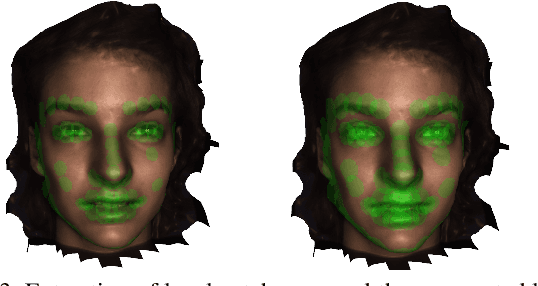
Abstract:Face identification/recognition has significantly advanced over the past years. However, most of the proposed approaches rely on static RGB frames and on neutral facial expressions. This has two disadvantages. First, important facial shape cues are ignored. Second, facial deformations due to expressions can have an impact on the performance of such a method. In this paper, we propose a novel framework for dynamic 3D face identification/recognition based on facial keypoints. Each dynamic sequence of facial expressions is represented as a spatio-temporal graph, which is constructed using 3D facial landmarks. Each graph node contains local shape and texture features that are extracted from its neighborhood. For the classification/identification of faces, a Spatio-temporal Graph Convolutional Network (ST-GCN) is used. Finally, we evaluate our approach on a challenging dynamic 3D facial expression dataset.
SHARP 2020: The 1st Shape Recovery from Partial Textured 3D Scans Challenge Results
Oct 26, 2020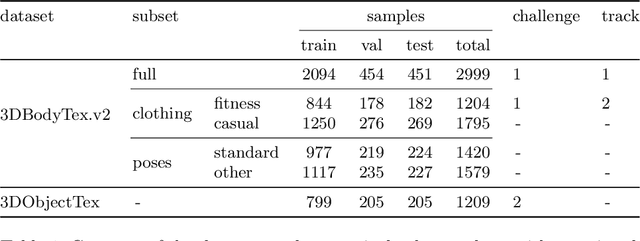
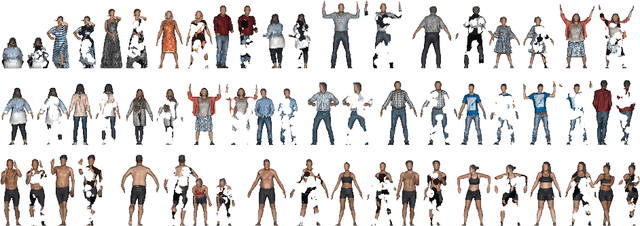


Abstract:The SHApe Recovery from Partial textured 3D scans challenge, SHARP 2020, is the first edition of a challenge fostering and benchmarking methods for recovering complete textured 3D scans from raw incomplete data. SHARP 2020 is organised as a workshop in conjunction with ECCV 2020. There are two complementary challenges, the first one on 3D human scans, and the second one on generic objects. Challenge 1 is further split into two tracks, focusing, first, on large body and clothing regions, and, second, on fine body details. A novel evaluation metric is proposed to quantify jointly the shape reconstruction, the texture reconstruction and the amount of completed data. Additionally, two unique datasets of 3D scans are proposed, to provide raw ground-truth data for the benchmarks. The datasets are released to the scientific community. Moreover, an accompanying custom library of software routines is also released to the scientific community. It allows for processing 3D scans, generating partial data and performing the evaluation. Results of the competition, analysed in comparison to baselines, show the validity of the proposed evaluation metrics, and highlight the challenging aspects of the task and of the datasets. Details on the SHARP 2020 challenge can be found at https://cvi2.uni.lu/sharp2020/.
Vertex Feature Encoding and Hierarchical Temporal Modeling in a Spatial-Temporal Graph Convolutional Network for Action Recognition
Dec 20, 2019
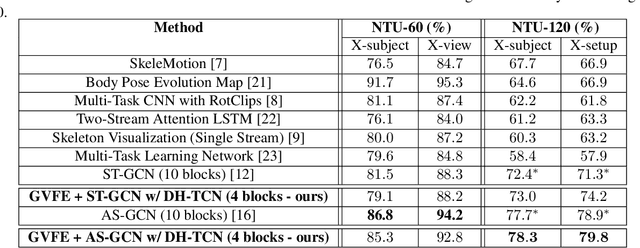


Abstract:This paper extends the Spatial-Temporal Graph Convolutional Network (ST-GCN) for skeleton-based action recognition by introducing two novel modules, namely, the Graph Vertex Feature Encoder (GVFE) and the Dilated Hierarchical Temporal Convolutional Network (DH-TCN). On the one hand, the GVFE module learns appropriate vertex features for action recognition by encoding raw skeleton data into a new feature space. On the other hand, the DH-TCN module is capable of capturing both short-term and long-term temporal dependencies using a hierarchical dilated convolutional network. Experiments have been conducted on the challenging NTU RGB-D-60 and NTU RGB-D 120 datasets. The obtained results show that our method competes with state-of-the-art approaches while using a smaller number of layers and parameters; thus reducing the required training time and memory.
Localized Trajectories for 2D and 3D Action Recognition
Apr 10, 2019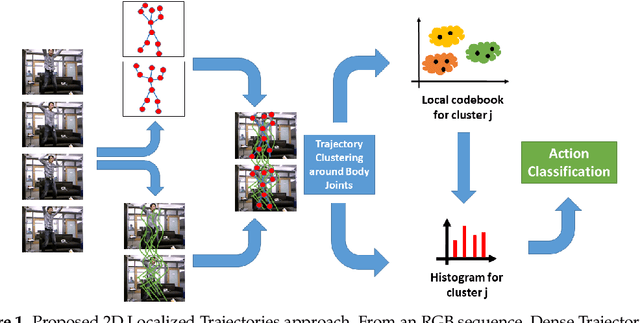
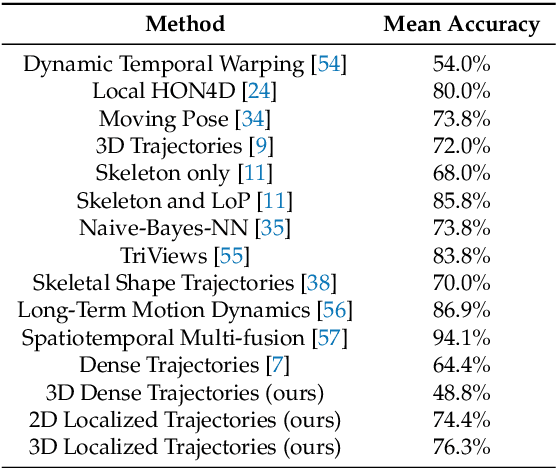
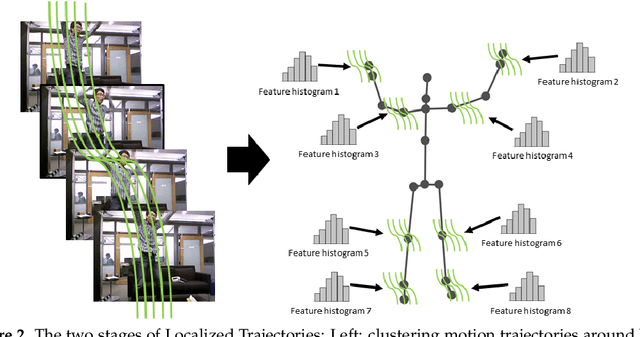
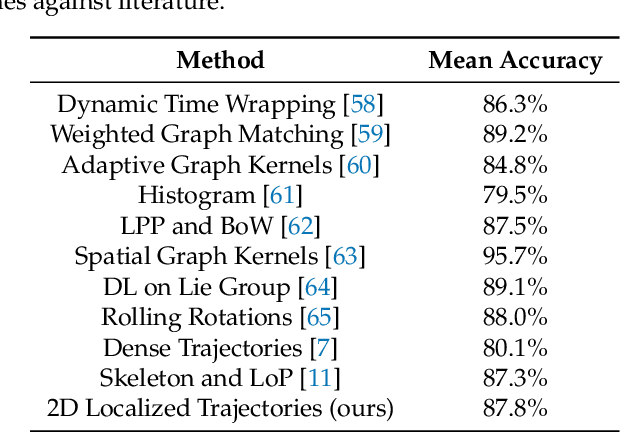
Abstract:The Dense Trajectories concept is one of the most successful approaches in action recognition, suitable for scenarios involving a significant amount of motion. However, due to noise and background motion, many generated trajectories are irrelevant to the actual human activity and can potentially lead to performance degradation. In this paper, we propose Localized Trajectories as an improved version of Dense Trajectories where motion trajectories are clustered around human body joints provided by RGB-D cameras and then encoded by local Bag-of-Words. As a result, the Localized Trajectories concept provides a more discriminative representation of actions as compared to Dense Trajectories. Moreover, we generalize Localized Trajectories to 3D by using the modalities offered by RGB-D cameras. One of the main advantages of using RGB-D data to generate trajectories is that they include radial displacements that are perpendicular to the image plane. Extensive experiments and analysis are carried out on five different datasets.
 Add to Chrome
Add to Chrome Add to Firefox
Add to Firefox Add to Edge
Add to Edge